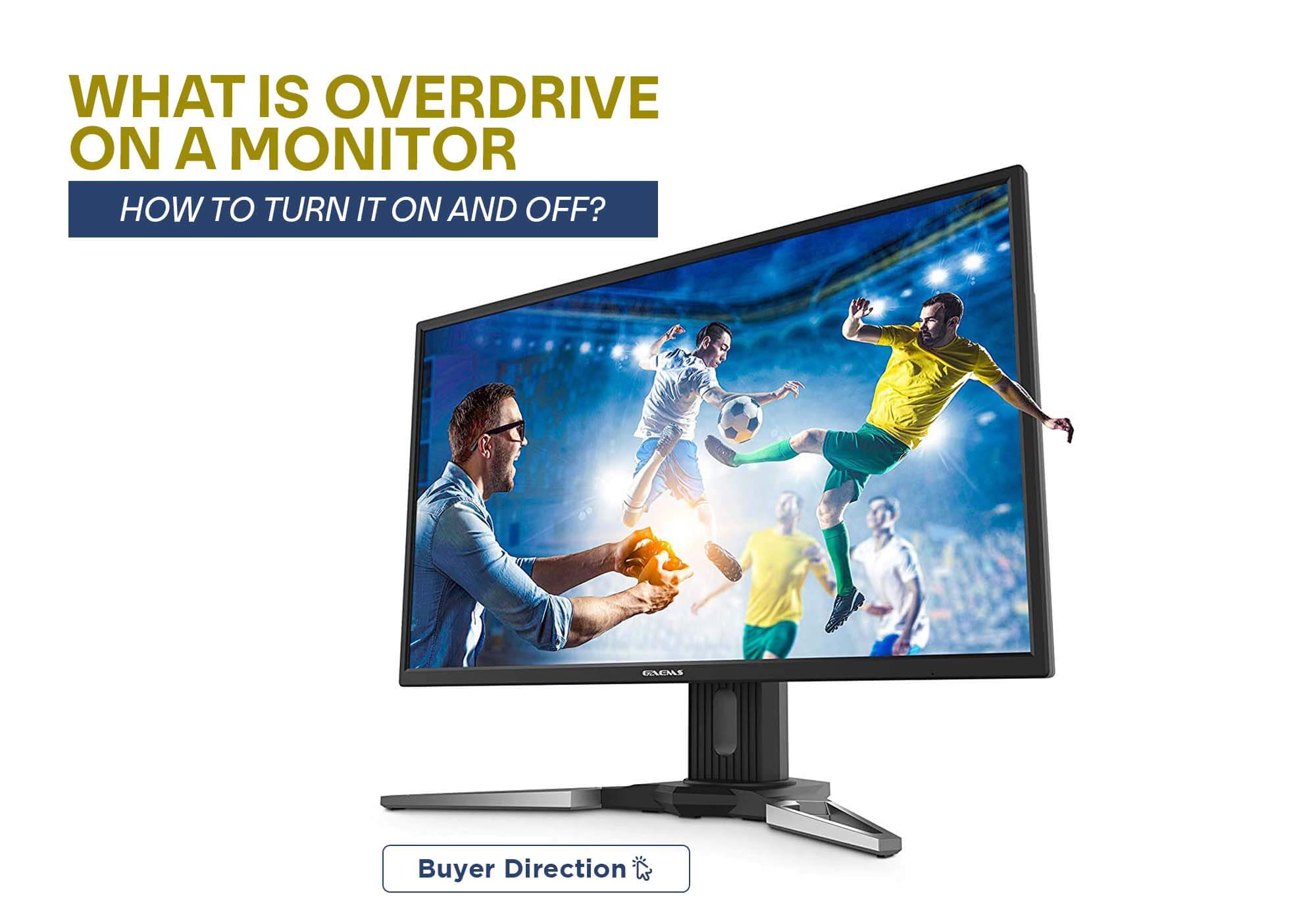What is Overdrive on a Monitor and How to turn it on and off?

A superior quality display monitor also features various backend functions that alter your display output. Therefore, you need to remember multiple characteristics concerning how a monitor display works to produce an advanced end outcome when purchasing a display monitor for your next game-playing experience.
While you know about the resolution, display size, and the top manufacturer of the monitor, it may be a bit more push to play a game with the pre-set response time. When you have things in your hands, it may be a lot more engaging and adaptive. If you wish to increase the response time, the overdrive is there to help.
What is overdrive on a Monitor?
You may have heard the overdrive on the display monitor, particularly if you’re a gamer. Overdrive names, like OD, Overdrive response, or time compensation, but in performance, each object are the same.
The reaction time in a monitor display is when each pixel changes from one color to the other. And it takes some time to move from color to color; we know it as a reply time. So, therefore, if you would like to increase or improve your monitor time, you will use this feature.
MPRT vs. GTG Response Time
Some monitors use the fastest response time with the MPRT, which is different from the GYG reaction time. The MPRT is the time of pixel visibility wherein the pixel seems at the display screen. In contrast, the grey to grey is the pixel transition time.
What Is The Purpose Of Overdrive In A Display Monitor?
Overdrive reaction time permits you to push the reveal’s reaction time speed on the way to lessen the ghosting of fast-transferring gadgets. For example, a 60 Hz monitor refreshes the photograph 60 instances in line with 2d, so there are 16.67 milliseconds between two refresh cycles.
The motive of overdrive is to grow the reaction time which prevents screen ghosting. Specifically, it helps fast-paced games and animation. Using the overdrive feature, untimely continues off the slightest lag, screen tearing, and ultimately turns into incredible gameplay.
Overdrive enhances the reaction time by way of rushing up the on-display screen pixels with the help of the use of higher voltages.
Is Overdrive Bad for Display?
An excessive quantity of overdrive can create inverse ghosting or pixel overshoot, so do not use it until you prefer immoderate smearing in speedy-paced games. With higher refresh rate displays, overdrive is vital for the most fulfilling gaming enjoyment. Therefore, a gaming reveal must have a terrific overdrive implementation.
Inverse ghosting occurs when a shadow with opposite colors appears. At the same time, you look at the shifting screen, item, or something comparable. Therefore overdrive with too much presence can enhance such problems.
Where are Overdrive Settings?
You are probably questioning how you can turn on and off the overdrive on your Display Monitor?
A way to adjust or turn on the overdrive depends on the display settings especially. Besides, you have to understand that by using which name the overdrive characteristic is to be had on your show display, be it TV, screen, or laptop! So right here is how to do it:
Visit the placing menu and search for the on-screen display (OSD) option. Here you may additionally find the adjustment of your display.
The display consists of brightness, comparison, and overdrive as correctly. After you’ve opened the overdrive menu, you have to see the different overdrive stages pronouncing slow, ordinary, and fast, and quicker so that you can pick up your acceptable one and set it.
The most crucial factor is that it relies upon the show setting and the way the manufacturer has designed it. Some display settings for overdrive are available in the range, while some come with just the switch on or off characteristic.
Does Overdrive Cause Input Lag?
As you recognize, reaction time, refresh rate, and overdrive are one way or the other related to each other. If you turn on the overdrive function, there might now not be any input lag in any respect. But if you are using the low overdrive settings, it may cause a ghosting effect.
Should You Activate the Overdrive or Keep it off?
As you already know, an excessive amount of extra overdrive can motivate the inverse ghosting, promoting pixel overshooting.
Consequently, it’s far cautioned that you ought to handiest use the overdrive in-display video display units. At the same time, you enjoy excessive smearing even as playing short-paced games. On the other hand, if you play high-stop aggressive video games, the better overdrive will become a necessary component for maintaining unparalleled gameplay.
Conclusion
To sum up, the overdrive boosts the reaction time, and therefore you don’t find the ghosting and trailing on the display screen. With the short movement and transferring items, this feature makes the show ever so smooth and appreciable.